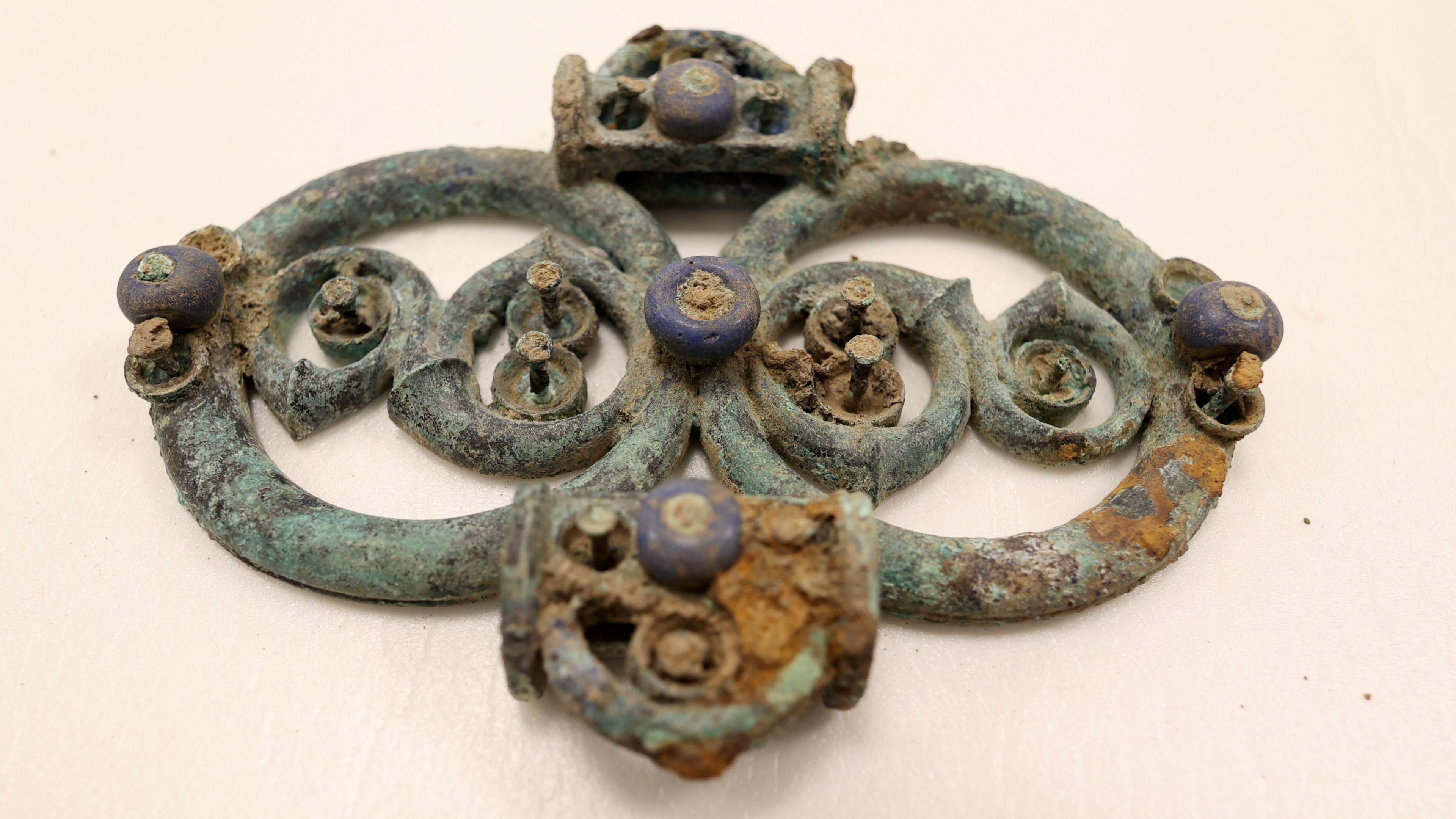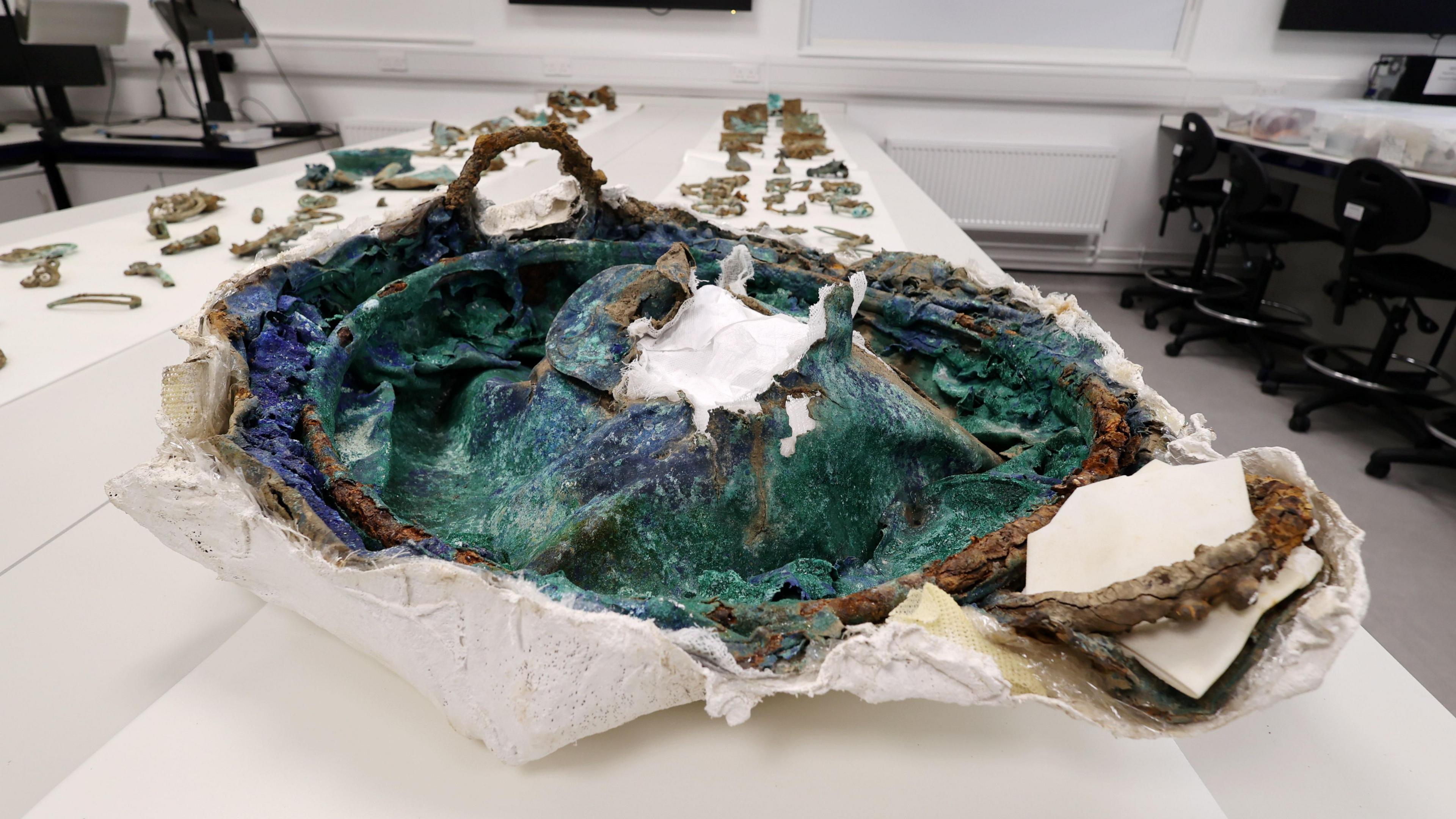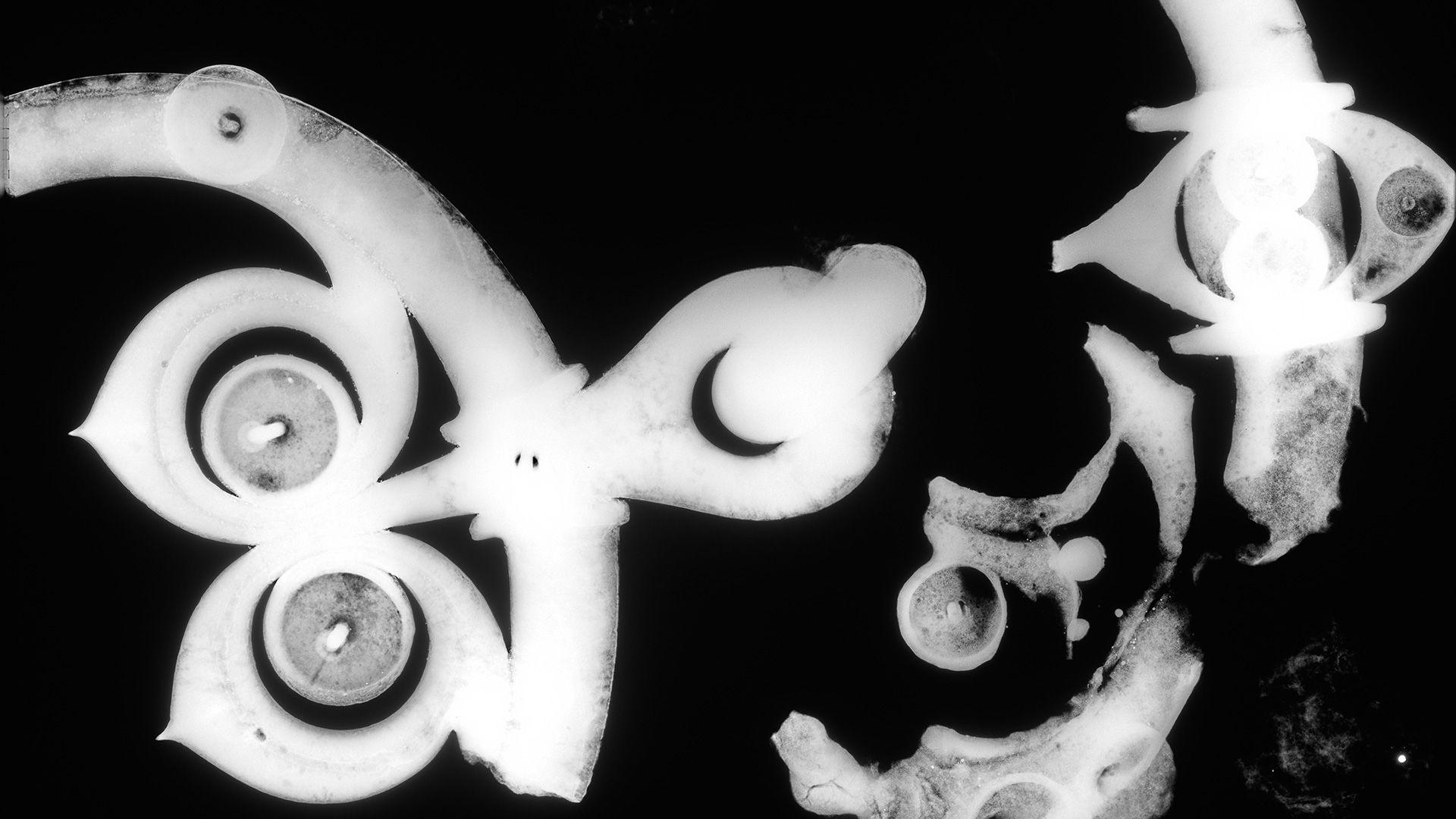More than 800 Iron Age treasures found in huge discovery from 2,000 years ago

One of the many objects found in the dig
- Published
A team of archaeologists, who look at ancient sites and objects to learn about the past, has just announced one of the biggest Iron Age finds ever in the UK.
The Iron Age was a period of time where people learned how to melt iron and shape it into tools and began to use the material more widely. It began around 800BC in Britain.
It's thought that items in this find of around 800 objects, including the remains of wagons and horse harnesses, date back 2,000 years ago to the time of the Roman invasion of Britain.
Duncan Wilson, Chief Executive of Historic England, said: "Quite simply, this is one of the most important and exciting Iron Age period discoveries made in the UK."
More great finds:
Biggest ever UK dinosaur footprint site discovered
- Published2 January
The historic discoveries found under a football pitch in Cardiff
- Published26 June 2024
Watch archaeologists uncover ancient paintings in Pompeii. Video, 00:01:59
- Published12 April 2024

This crushed cauldron was also found in North Yorkshire
The fact that there are so many items, with such a variety of objects, is unusual for a finding of this kind.
As well as parts of chariots or wagons and the fancy harnesses for at least 14 ponies, there are also two cauldrons, three ceremonial spears, and various bits and bobs made from cast copper alloy.
It's hoped that these items can help historians understand how vehicles were used in the Iron Age and how the people showed their wealth.
The original discovery came back in 2021, after a metal detectorist found them in a field in Melsonby, North Yorkshire.

These artefacts are really important in telling us about society, technology, wealth, power and travel in Iron Age Britain

A CT scan uses x-rays and computers to see inside something - which is one of the methods the team used to see what they had found
Then in 2022, a team from Durham University got permission to dig up a block of the area to uncover the hidden treasures.
Once they had lifted this block from the earth, they worked with a team at the University of Southampton to do a CT scan to see what was inside.
The Yorkshire Museum is keen to display the findings and is currently fundraising to buy the hoard, but it's not sure when or where these materials will be exhibited.
Historic England's Duncan Wilson says that "any member of the public viewing these new discoveries will feel a real sense of excitement and wonder."
Analysis of the materials has just begun, but the team says more research is needed to see if they can find comparisons with other similar objects in Britain and Europe.
